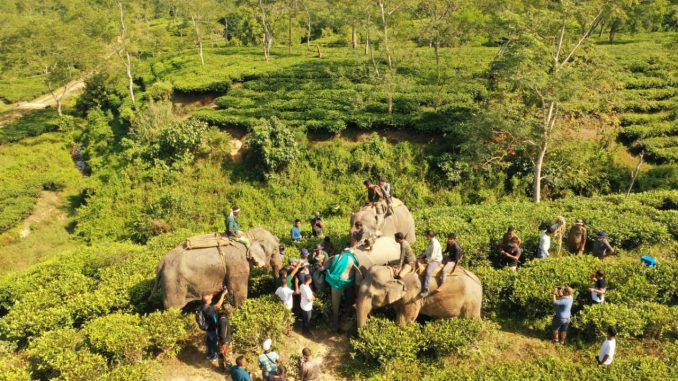
For the first time in the state, the forest department and the World Wildlife Organization WWF have taken measures to set up Radio Caller around the necks of wild elephants. In the first phase, a team of forest departments has been set up at the 22nd branch of the new Adabari tea garden under the Amaribari forest office in Rangapara. A team of doctors from the World Wildlife Organisation arrives.
Where exactly is the wild elephant located, The forest department and the World Wildlife Organisation have already taken steps to set up this Radio Caller to find out the exact details of how many elephants the herd has, which elephant has come and the herd of wild elephants and whether the herd of wild elephants is coming out of the Sonai-Rupa wildlife sanctuary or from The Namari National Park. The team has already brought seven kunki elephants to the Adabari tea garden.
Dr. Kushal Konwar Sharma, padma shri awardee and senior doctor for putting radio collars around the neck of wild elephants in adabari tea garden known as the habitat of wild elephants, Dr Kaushik Baruah, Dr Shamsul Ali, Doctor, Panpur Wildlife Rehabilitation Centre, Kaziranga, Dr Parikshit Kakati, Dr Anupam Sharma along with Forest Authority Officer of West Sonitpur district Nripendra Nath Kalita, District Forest Officer Pankaj Sharma, Wwf coordinator Hiten Goswami, Project Director David Smith, Arjun Kangar, nature lover Dilip Nath, Pankaj Nath along with Rangapara-Charidoor police and forest workers from Amaribari, Tezpur Sadar forest office were present. Doctors.
A male wild elephant was tranquilized directly and arranged for radio collars to be installed. But later instead of the male elephant, a female elephant plans to install this arrangement around its neck. But the operation had to be completed halfway through the evening when the elephant entered the jungle with the herd and came in the evening.
Senior doctor Dr Kushal Konwar Sharma said that radio collaris are an advanced technology. This allows the movement of wild animals to be monitored with the help of satellites. To reduce conflict between humans and wild elephants, information about elephant movements is being sought to be installed on the necks of two wild elephants in the reddened area for early gain.
It may be recalled that the people of the larger area under the Amaribari forest office have to be covered by wild elephant menace. Wild elephants have entered the forest area from time to time and destroyed the fields as well as damaged property and human resources. The forest elephant’s habitat moves to the public due to lack of land, food and water as the forest is shrinking parallel to deforestation.
Even today, the human society’s attempt to chase away the wild elephant, fearing the terror of a wild elephant who knows the deity, has become a routine task. On the contrary, for the first time, the WWF and the forest department have taken experimental measures to prevent elephant conflict.


Leave a Reply